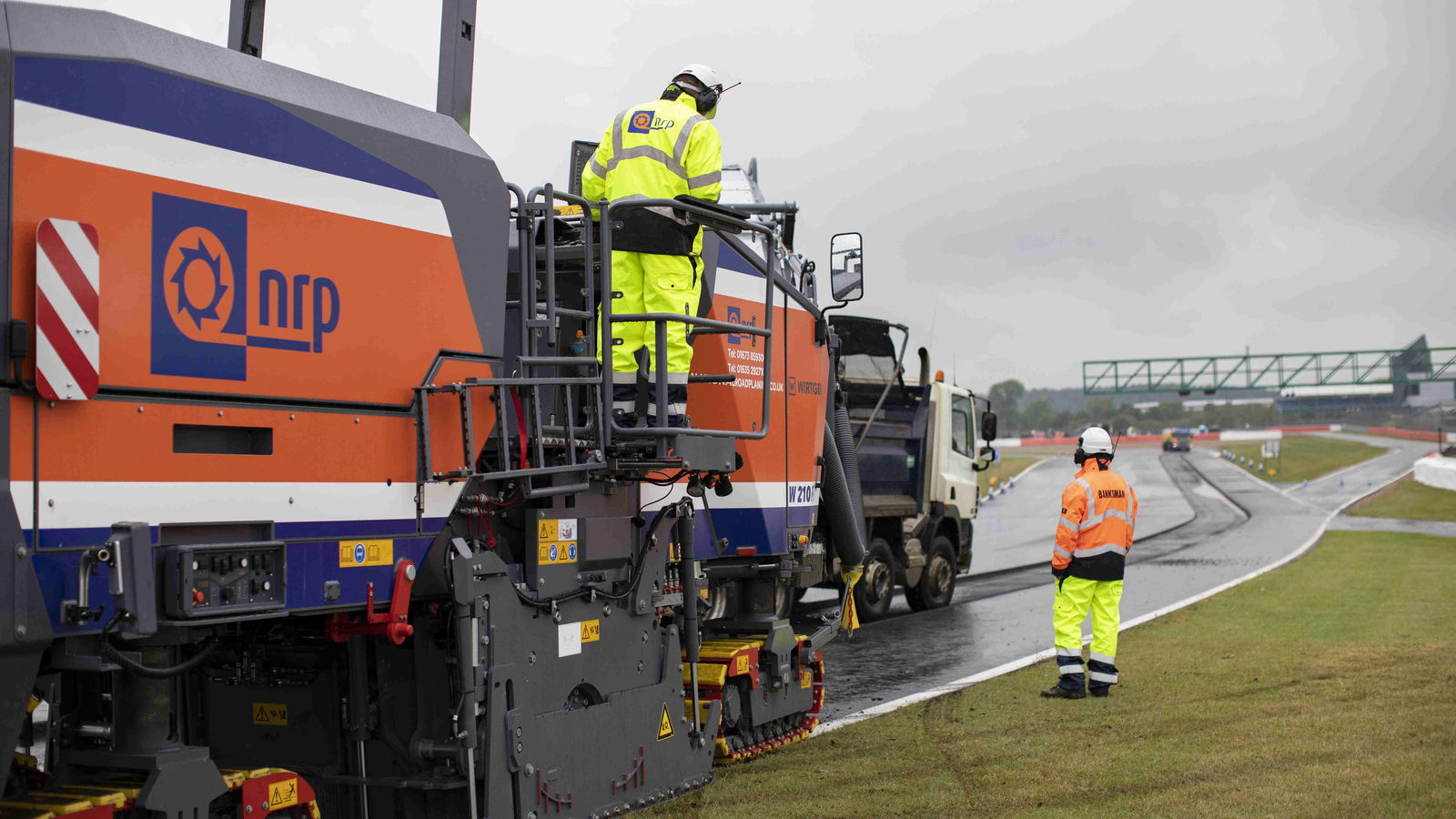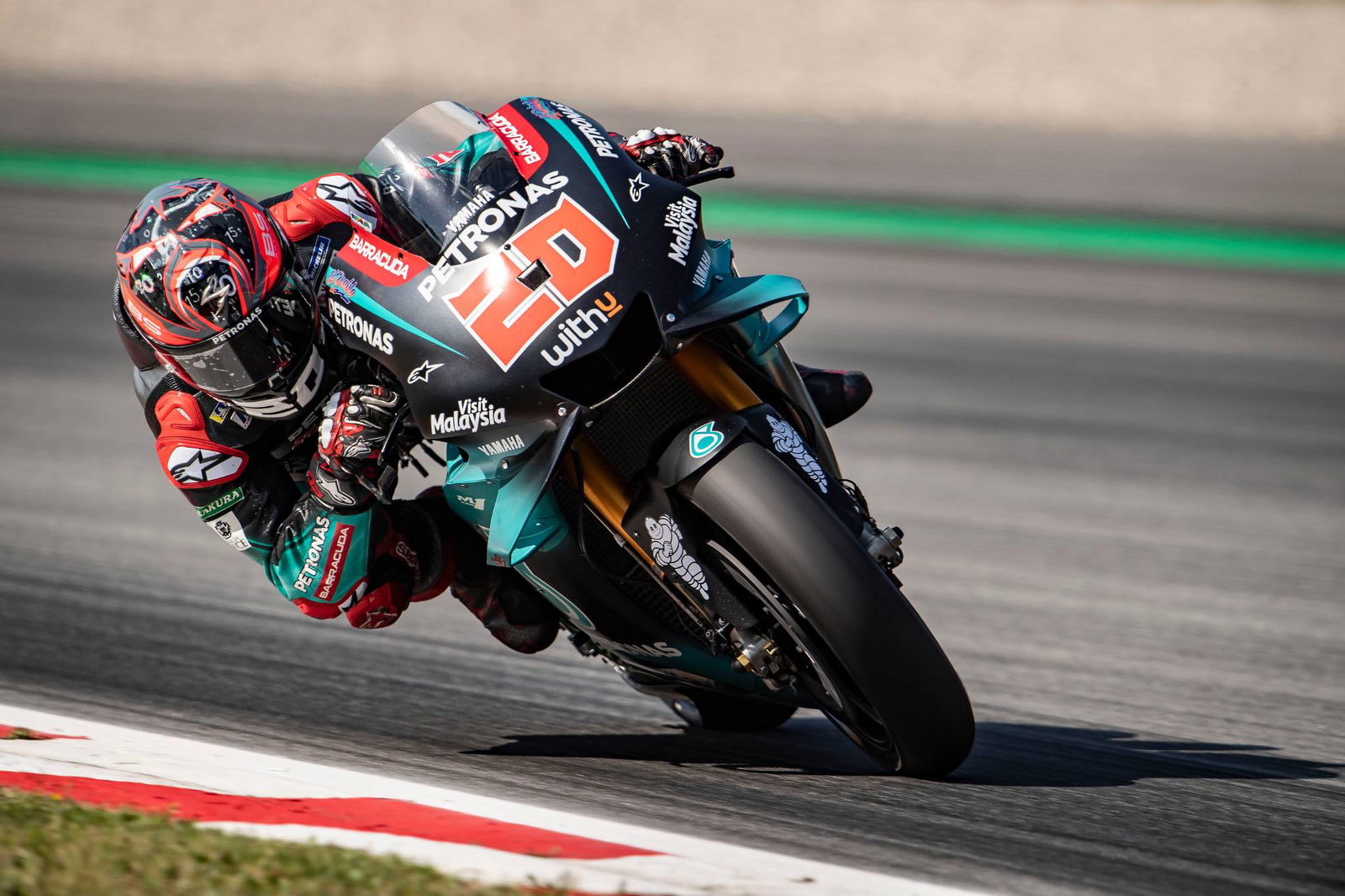Silverstone resurfacing works begin
Silverstone’s resurfacing work started on the 10th June, with British building materials company Tarmac, international circuit designer Dromo and the BRDC pouring thousands of man hours and millions of pounds into the Northamptonshire venue.
Rewind 12-months to the British round of the 2018 MotoGP championship to see where this journey began. A series of freak weather events led to one of the most frustrating weekends for the organisers and disappointing one for the fans.

Silverstone’s resurfacing work started on the 10th June, with British building materials company Tarmac, international circuit designer Dromo and the BRDC pouring thousands of man hours and millions of pounds into the Northamptonshire venue.
Rewind 12-months to the British round of the 2018 MotoGP championship to see where this journey began. A series of freak weather events led to one of the most frustrating weekends for the organisers and disappointing one for the fans.
It was one of the hottest summers on record, with temperatures hitting 30°C or more and almost no rainfall to speak of. Come the MotoGP race weekend though and the heavens opened, dumping weeks’ worth of rain in just a couple of days.
After lengthy delays, the decision was finally made to cancel the race, with the heavy rain failing to drain from the newly laid track surface. Both Race Direction and the premier class riders deeming it unsafe for any events to take place on Sunday.
With MotoGP pointing the finger at the new surface, Silverstone have tasked UK building and aggregates specialist, Tarmac, and world-renowned circuit designer, Dromo, to assist with the works.
To start with, Dromo have mapped the entire circuit, looking at places where water was either draining slowly or not at all. Once the problem areas were highlighted, Dromo’s circuit design maestro, Jarno Zafelli, set about building computer generated models of what the circuit could look like once the team from Tarmac had shaved the surface to his designs.
Crash.net spoke to Zafelli during the press call at Silverstone and he was keen to press that the works are not about losing the character of the iconic venue, but to improve the drainage, while enhancing wet and dry grip. “Once we start to plane the track, the surface could never be the same again, so we have to get it right! But it is not about a change of the track it must feel the same, just work better.”
Along side the computer models and autonomous paving machines is something a little more traditional – good old-fashioned blacktop, asphalt or Tarmac. The key to consistent grip is to have uniform structure and to ensure the surface at Silverstone is as uniform as it gets, they are processing aggregate from just one quarry in Shropshire, then cleaning it over and above the standard specification you’d normally see in the UK. Once cleaned the aggregate is shipped to two Tarmac plants, ensuring that the rollers at the track will never run out of road surface.
With all this high-tech, autonomous wizardry in action, it’s seems that any rain effected races (two and four wheel) should still be able to go ahead.
Selected media were invited to see this in action, walking a newly-laid section of the course in some typical British summer weather. First impressions are good as the heavy rain isn’t forming large rivers that cross the track, instead the new surface forms hundreds of tiny streams that criss-cross the surface.

Tarmac and Dromo claim that the custom aggregate mix and new profile should allow the track to drain 4% faster than before – good news if the heavens open again this summer.
When pressed on that matter of customer confidence in the venue, Tarmac Regional Director, Richard Vine, was hesitant guarantee a wet race would go ahead, but did say this: “From what I’ve seen with the intricacies of the design and the profile of the design (track), I’m not overly familiar with [this method of track design], but from a contractor’s perspective and a motorsport enthusiast prospective, looking at where we are now from where we were, it’s just phenomenal.
“You can see on every area where they had a water problem previously, that has been well and truly remedied. We are taking on average 60mm off the original track but where the profiling is required, we’re taking anything up to 170mm off one side and nothing from the other side.”
So while that isn’t a cast iron pledge that 2018’s MotoGP cancellation cannot happen again, and monsoon levels of rainfall could cause a race cancellation at any circuit, it does seem that for this job the BRDC and Silverstone’s managers have at least got the best people in to rectify the situation.

